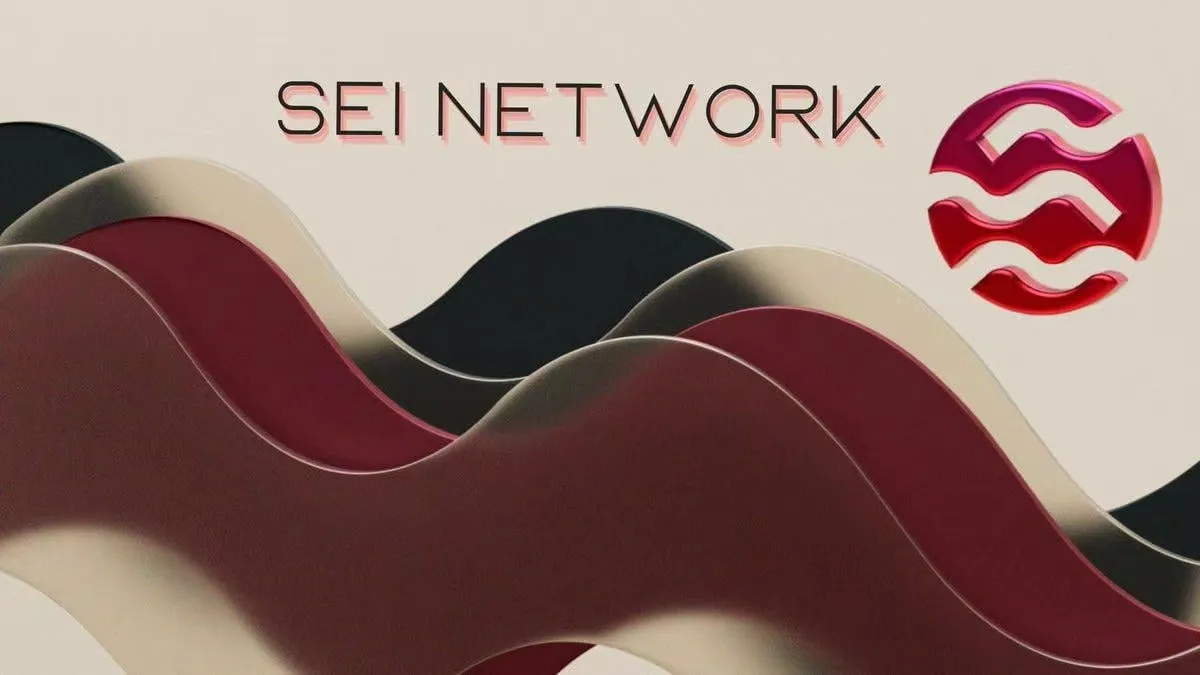by Kylo@Foresight Ventures
The emergence of blockchain technology and its ecosystem have presented many opportunities for innovators, developers, and end-users. This decentralized technology underpins cryptocurrency transactions and has made significant strides in various traditional industries. However, existing blockchain solutions have been grappling with issues related to scalability, transaction speed, and front-running. Here is where Sei positions itself as a game-changer.
The report can be divided into several specific sections which are “A Quick Introduction of Sei Mechanism “, “Sei’s thriving ecosystem”, and “the comparison between Sei and Other layer1“ as well as “Its unique advantages in Terms of Trading”.
Sei: A Quick Introduction
Sei, a general-purpose layer-1 blockchain for trading digital assets, is designed to address the existing issues in the prevailing blockchain networks. It operates under a unique consensus mechanism known as Twin-Turbo consensus, which facilitates fast finality, high throughput, and scalability. This innovative approach makes Sei a versatile and robust platform, effectively bridging the gap between decentralization and performance.
Twin-Turbo Consensus
Sei is a parallel Layer 1 with high TPS and is similar at the consensus level to the Tendermint mechanism but it differs from the latter. For a better understanding of the mechanisms of the Sei, we need to understand the traditional block generation mode. A block is generated by a validator who packs the transactions in their own mempool and reaches consensus throughout the network. Each network validator has its own memory pool (mempool). A Gossip refers to the process in which, when a transaction occurs, the user will submit the information related to the transaction to a full node (the full node also belongs to the validator), and the full node will send the relevant information to other nodes throughout the network. After receiving and validating the transaction information, other nodes will add this transaction to their mempools. The proposer, the one who builds the block, will sort the transactions from their own mempool, produce the block, and broadcast the information of this block throughout the network, and other validators will validate the information of this block. After reaching consensus through validation, other validators will accept the full block information from the proposer.

It can be found from the above mechanism that there are two steps to be possibly optimized:
• As each validator has a mempool, the transaction data in a new block may have already existed in their respective mempools. Other validators can generate blocks by themselves without having to wait for the proposer to send the detailed block data to them.
• The confirmation of a block requires the steps of block proposal, validator voting, reaching consensus, and block broadcasting. As the above steps are taken in serialization, there is no way to accelerate them. It can significantly improve block performance if such steps are processed in parallel.
Based on the above two points, Sei has performed optimization at the consensus level and defines its own consensus mechanism as Twin-Turbo Consensus. To put it simply, Twin-Turbo Consensus is a smarter block propagation method and an optimistic block production mechanism.
The first component of twin-turbo consensus needs to solve two problems:
• Having each validator’s mempool contains all transaction information as much as possible; and
• Enabling other validators to quickly know the transaction information-packed by the block proposer.
It is ideal to have all mempools contain all transaction information, which is hardly realizable. Therefore, Sei has taken remedial measures. When proposing a block, the block proposer will send the block throughout the network after breaking it, while sending the hash of all the transactions in the block. Based on the hash, other validators will look for corresponding transactions in their own mempools. If a portion of transactions are missing, they will look for the missing portion of transactions from the block fragments sent by the block proposer to rebuild the block. In this way, Sei reduces the time needed by other validators to synchronize block information.

The second component of Sei’s consensus adoption is an optimistic block generation mechanism. Being “Optimistic” once means that it is deemed by default that the majority of block proposers will not make mistakes. Under the assumption of being optimistic, a validator can process block data simultaneously when performing prevoting and precommitting. That is, the validator first writes the block data proposed by the proposer to the cache, and if the block passes the validation, the cache data can be directly imported without having to wait to pass the prevoting and precommitting in serialization. Through the above Twin-Turbo Consensus, Sei reduces transaction latency and improves blockchain performance.

Transaction Parallelization
Another unique aspect of Sei’s design is its parallel block production. Most existing blockchains, such as Bitcoin or Ethereum, follow a linear block production method, producing one block at a time. However, Sei has flipped the script by allowing the production of multiple blocks simultaneously. To illustrate, imagine a busy highway with multiple lanes as compared to a single-lane road. The multilane highway represents Sei’s parallel block production, ensuring a more efficient flow of transactions, akin to vehicles on the highway.
Transaction parallelization is a common way adopted by Layer 1s such as Solana and Aptos to improve throughput. But transaction parallelization for Sei has another meaning.
Sei places in the validator nodes the matching engine of the order books, requiring each validator to maintain a mempool. When any validator is selected as a block proposer, it needs to directly match transactions through the built-in matching engine and propose blocks. For Sei, due to its nature as a Layer 1 network, transactions stored in a mempool come from all the protocols on Sei, and most of them are irrelevant to each other. If serialization is still adopted, the order book protocols on Sei will be in a competitive state of robbing the blockspace, making it adverse to the development of the ecosystem as a whole.
In summary, the parallelization design of Sei actually aims at allowing projects on Sei to operate without interference with each other and also increases system throughput.
One of the major problems faced by transaction parallelization is the mutual relevance of transactions, and that mutually related transactions can be taken only through transaction parallelization. For example, the NFT minting process requires the minted NFT not to be fully minted, so it can be carried out in serialization only. Therefore, the problem that needs to be solved for transaction parallelization systems is how to distinguish between independent transactions and related transactions. The UTXO model is one of the common methods for taking parallel transactions, but Sei adopts the directed acyclic graph (DAG) for parallel transactions. A DAG can be simply understood as a polyline with a direction, where a connected line refers to a certain transaction, and the two transactions connected to such a transaction are related to that transaction. Sei will set up a DAG for all the transactions throughout the network to identify related transactions.

Sei’s parallel block production directly contributes to its impressive transaction speed and scalability. As per testnet results, Sei has achieved a phenomenal time to the finality of just 0.5 seconds, making it one of the fastest blockchains in existence today. Consider a high-frequency trading scenario on a decentralized exchange where speed is critical. With Sei’s fast transaction finality, trades can be executed almost instantly, giving traders an edge and making the exchange more competitive than exchanges operating on other blockchain infrastructures.
Sei’s Front-running Prevention Mechanism
Front-running is a prevalent issue in blockchain, particularly affecting decentralized exchanges. Front-runners manipulate the transaction order to their advantage, resulting in unfairness and inefficiencies in the market. Sei tackles this problem head-on with its front-running prevention mechanism.
Sei’s strategy is unique: instead of executing transactions sequentially, Sei aggregates market transactions at the end of a block and executes them at the same average price. This method, known as frequent batch auctions, effectively curtails the possibility of front-running.
So due to the above functions of Sei, Sei can achieve high TPS and parallelization under the premise of safety and reliability, thus laying the foundation for its thriving ecosystem.
Sei’s thriving ecosystem
Sei’s fast and robust blockchain allows developers to build superior web3 applications, providing a user experience that mirrors the maturity seen in web2 infrastructures. As of now, Sei’s thriving ecosystem comprises over 150 projects across various web3 domains, including social, NFTs, gaming, and DeFi.

Some of the top projects in Sei’s ecosystem include Fable, Dagora, and Fuzio, and each of these projects is building the next generation of decentralized applications in gaming, NFTs, and DeFi. Developers may choose to build on Sei for several compelling reasons:
Scalability: Sei’s high-performance architecture can handle thousands of transactions per second, making it suitable for dApps requiring high throughput and low latency.
Low Transaction Fees: Sei’s low transaction costs encourage developers and users to build and interact without concerns about high transactional costs.
Ecosystem Resources: Sei’s vibrant ecosystem provides a wealth of developer tools, resources, and community forums, along with support from notable investors and established blockchain projects.
Interoperability and Composability: Sei seamlessly interacts with other networks, enabling the composition of various protocols and applications.
Security: Sei’s consensus mechanism ensures robust security, allowing developers to focus on their applications without compromising the safety of user assets.
Community and Adoption: Sei’s growing traction and engaged community make it an attractive platform for developers.
Grants and Ecosystem Fund: The Sei Foundation offers grants to help teams expand Sei’s ecosystem. Sei’s $120M ecosystem fund helps projects scale faster.
With its innovative technology and commitment to solving the most pressing problems in web3 adoption, Sei stands as a top choice for web3 developers. In essence, Sei provides an optimized platform for developers to focus on their platforms’ unique selling points and explore new possibilities. In addition to this, Sei assists in bootstrapping liquidity on products that launch on its platform through the liquidity alliance program and offers exposure to a broad set of web3 users, courtesy of its vast community. According to the testnet data, there are more than 100 million transactions that happened on Sei with more than 5 million wallet addresses. Active user-on-chain behavior will generate great vitality for Sei ecosystem.
Decentralized Exchanges on Sei: Superior Performance and Lower Costs
Sei is not just about speed and scalability. It also showcases a high degree of flexibility and adaptability. Developers have the freedom to build a wide range of applications on Sei, from decentralized finance (DeFi) solutions to gaming platforms and NFT marketplaces. With its high throughput, low transaction fees, and fast finality, Sei provides an ideal infrastructure for building the next generation of Web3 applications. As we venture into a future where blockchain technology becomes increasingly integrated into everyday life, platforms like Sei will likely be at the forefront, driving innovation and adoption.
One of the areas where Sei’s capabilities shine is in facilitating decentralized exchanges (DEXs). Traditionally, DEXs built on most blockchains are susceptible to performance issues that become prominent as the number of transactions increases. High transaction fees, slow transaction finality, and poor scalability often compromise user experience and profitability.
Sei, however, provides a much-needed respite. It introduces an on-chain matching engine that makes markets more efficient and economically viable by leveraging fast finality, high throughput, and low gas costs. Consequently, it promises superior performance and lower transaction costs for decentralized exchanges, making them a more competitive alternative to centralized counterparts.
For example, consider a DEX built on Sei with a limit-sell transaction for one unit of a token (say, ABC) at $10. With Sei’s unique design, any market-buy transaction for the same ABC token would get executed faster and at the average price, thereby ensuring a fair and efficient trading environment.
Compared with Serum and DyDx, DEX on Sei Network enjoys a number of benefits.
The problems with DyDx are that the mechanisms are designed only to serve one application, such that there is a lack of conditions for other DeFi protocols to exist, and thus there is less space for liquidity sharing and mutual composability between protocols; in order to achieve so-called DeFi composability, it must be connected to off-chain DeFi applications by some cross-chain mechanisms. The problems with Serum are that even if Serum features abundant liquidity and a vast ecosystem that makes it easy to achieve composability between protocols, Serum’s stability will be greatly affected by the interference of on-chain activities irrelevant to transactions. However, Sei Network’s Layer 1 design can solve the problems faced by DyDx and Serum. To put it simply, Sei Network features a decentralized off-chain matching function and the composability of DeFi protocols which makes it the hub of Web3 projects.
Comparative Analysis of Sei with Other Prominent Blockchains
The world of blockchain technology is full of innovative platforms, each with its unique features, advantages, and limitations. To better understand how Sei stands out, let’s dive into a comparative analysis with other prominent platforms like Sui, Aptos, Solana, and Ethereum.

Sei
Sei’s key strength lies in its design, optimized to address challenges of scalability, transaction speed, and front-running prevalent in other blockchains. Utilizing a novel consensus mechanism, Sei offers high throughput, fast finality (as fast as 0.5 seconds), and scalability. Sei’s parallel block production further enhances these features, allowing it to handle a high volume of transactions. Additionally, it focuses on mitigating issues like front-running through unique mechanisms like batch auctioning.
Sui
Sui, while having its unique advantages, struggles in areas where Sei excels. The speed of transactions on Sui is slower in comparison, and its scalability issues might become a bottleneck as it grows. While Sui also has a focus on decentralization, its consensus mechanism does not match Sei’s in terms of flexibility, where nodes have the freedom to choose their validators.
Aptos
Aptos offers parallelized block production like Sei, and it offers a sound foundation for developers with its robust protocol and interoperability capabilities. It has demonstrated a commitment to facilitating decentralized applications (dApps), and its scalability makes it suitable for certain use cases. However, Aptos’ ecosystem still lacks the depth and breadth seen with Sei, which affects the degree of composability and synergy between applications built on its platform.
Solana
Solana also offers parallelized block production like Sei, and it stands out for its speed and low transaction costs, leveraging a unique timestamp system known as Proof of History. However, its focus on performance compromises some aspects of decentralization. Moreover, while Solana performs well in terms of scalability, Sei’s consensus mechanism allows for a more efficient and scalable system that can potentially handle many transactions simultaneously without running into congestion issues. Moreover, the developer experience at Sei is also better, which has led to over 150 projects building in the Sei ecosystem in such a short span of time.
Ethereum
Ethereum, the second-largest blockchain platform, has proven its capabilities in supporting a wide range of applications, particularly in the DeFi space. However, Ethereum struggles with high gas fees and scalability issues, especially during periods of network congestion. While Ethereum has made improvements to address these challenges, Sei has already built its infrastructure to overcome these issues from the onset.
In conclusion, while Sui, Aptos, Solana, and Ethereum each bring unique features and strengths to the table, Sei stands out for its novel design and robust performance. Sei’s blockchain architecture, optimized for speed, scalability, and security without compromising on decentralization, makes it a compelling choice for developers and users alike. Its built-in measures against front-running and its capacity for processing thousands of transactions per second while maintaining low fees position it as a strong contender in the blockchain space, potentially outpacing even established platforms like Solana.
The Future of Sei
Sei’s groundbreaking solutions have already laid the groundwork for web3 teams to succeed. By providing the best user experience and solving critical problems in web3 adoption, Sei is poised to lead as the fastest Layer-1 blockchain that scales with the industry.
The potential of blockchain technology is immense, and platforms like Sei are at the forefront of unlocking this potential. By offering a highly scalable, secure, and user-friendly environment, Sei is paving the way for the mainstream adoption of blockchain technologies, ushering in a new era of innovation and inclusivity.
Sei still faces fierce competition from other layer 1 and layer 2, though Sei’s mechanism and testnet data have already made Sei hit the ground running. Its subsequent prosperity still requires the continuous cultivation of ecological talents and community promotion.
References
https://www.sei.io/ecosystem
https://docs.sei.io/
https://twitter.com/SeiNetwork


